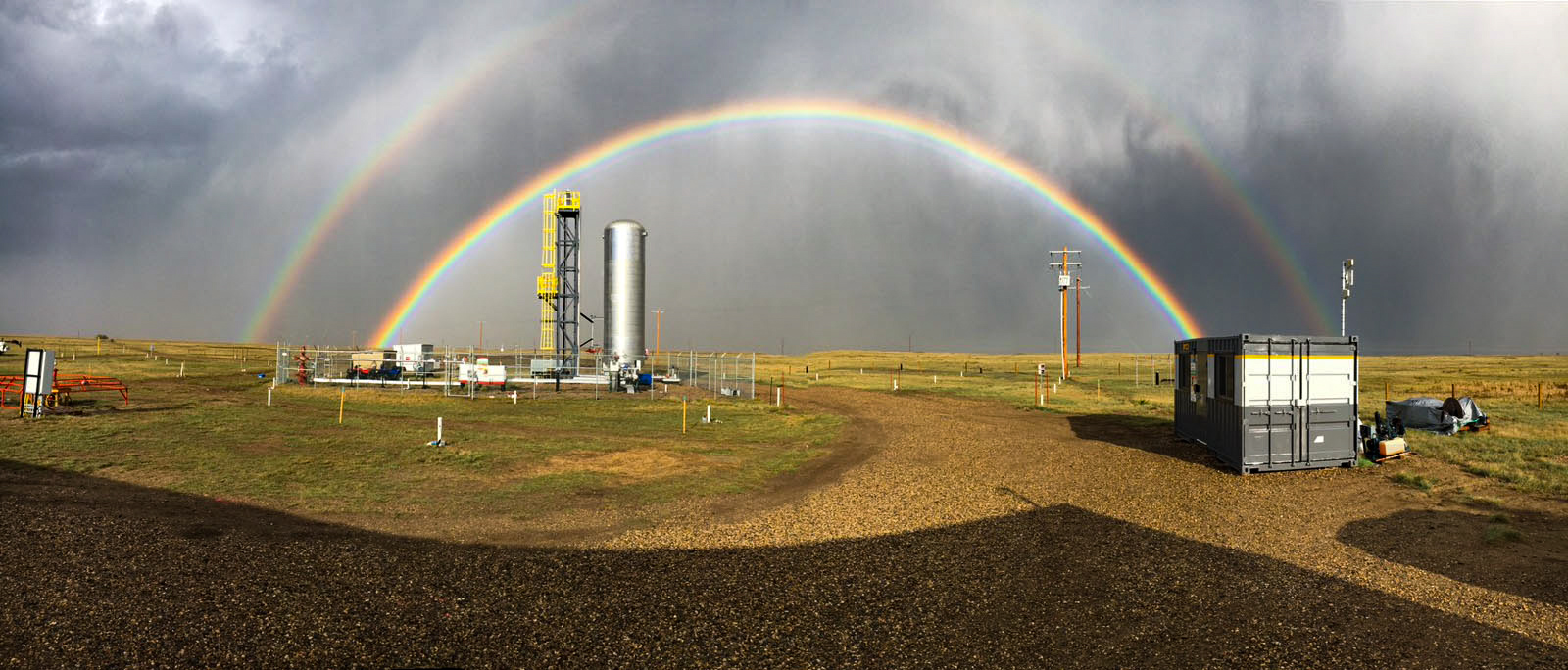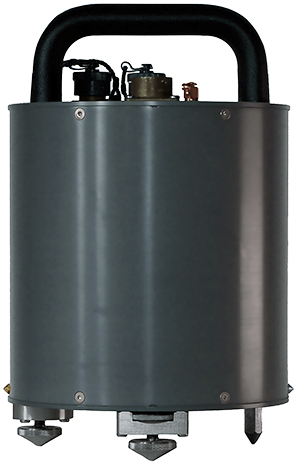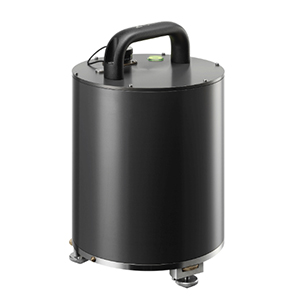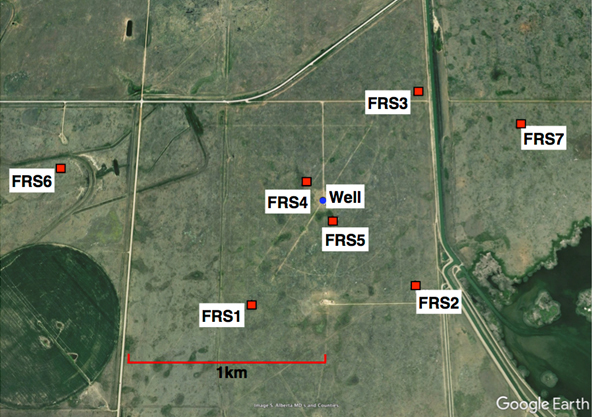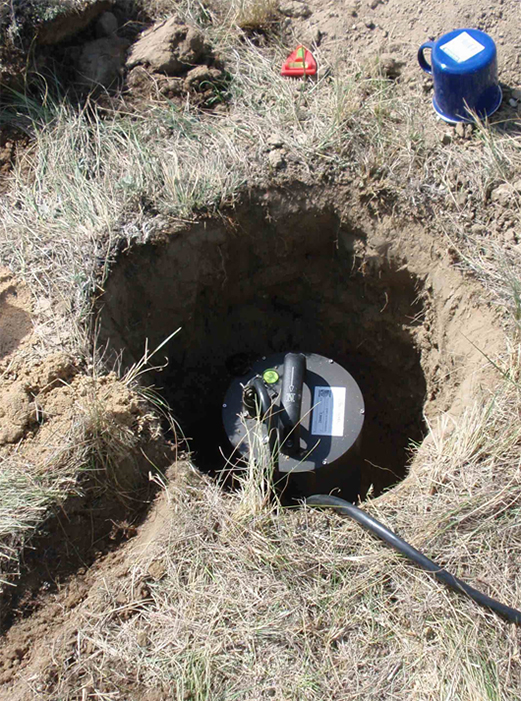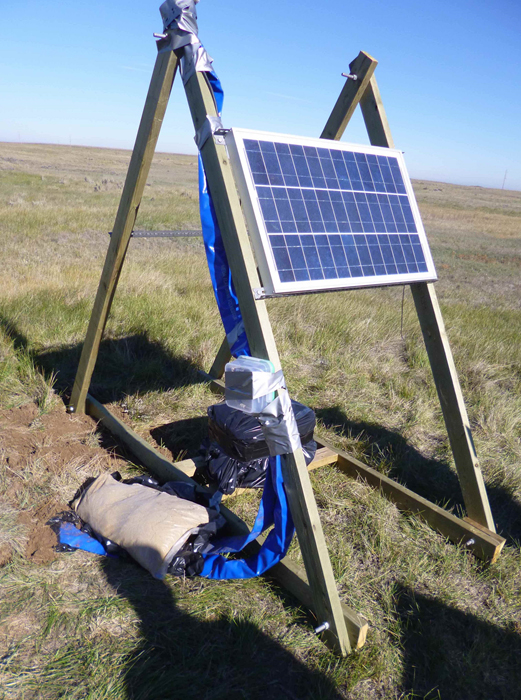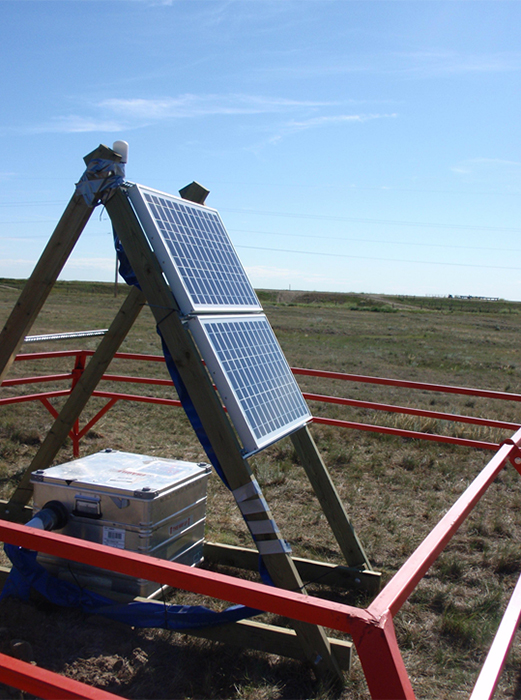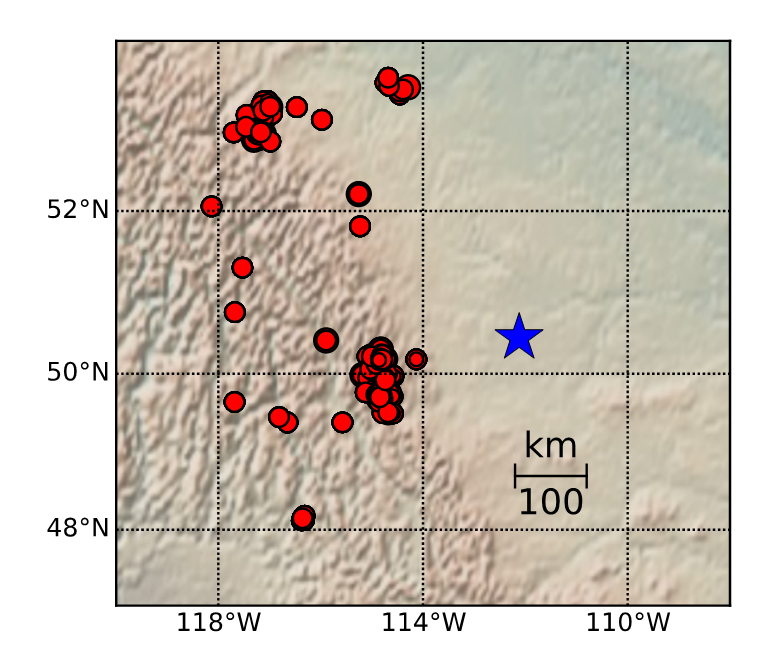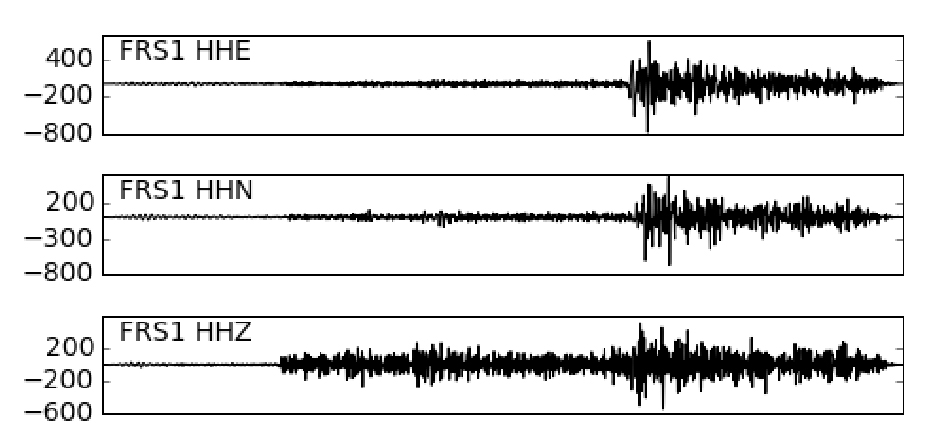Microseismic monitoring of CO2 injection in Alberta, Canada.
Background
Carbon capture, utilisation and storage (CCUS) is attracting rapidly growing interest worldwide as a valuable set of technologies that can assist in reaching climate emissions targets. The carbon storage element is achieved by injecting CO2 into deep geological formations including depleted oil and gas reservoirs. As a relatively new concept, research is ongoing to inform governments and regulators on suitable methods of injection, including safe ground motion parameters that should be adhered to during operations.
Carbon Management Canada (CMC) is a non-profit organization that was founded in 2009 with the aim of supporting research into technologies that can help to reduce carbon emissions. CMC operates the Newell County facility in Alberta, Canada where CO2 injection technologies can be subjected to extensive monitoring using state-of-the-art instruments and techniques around a 300m deep CO2 injection site.
Research undertaken at the site is informing the Government of Canada and other authorities seeking to establish safe CO2 storage monitoring protocols within a regulatory framework, as well as informing industry best practices.
Project Scope
The University of Oxford and the University of Bristol are working on a joint project with CMC to monitor CO2 injection at the CMC site using broadband seismometers.
Initially, the sensors were deployed to monitor the baseline seismicity of the region to allow for discrimination between induced and natural events as well as advising on monitoring parameters for induced events. In addition to detecting local microseismic events, the sensors are also being used to map underground structures in the vicinity of the injection site.
Induced seismicity can cause damage to nearby infrastructure and, in some rare cases, can pose a hazard to local populations. In addition, induced seismicity can also have an effect on the integrity of the CO2 reservoir as faulting may reduce cap integrity.
Monitoring the injection activity ensures that ground motion thresholds are not exceeded and allows for operational adjustments to be made, if needed, to mitigate risks.
Guralp Solution
A broad frequency range also allows noise interferometry to be used to image subtle changes in sub-surface properties, an important monitoring technique for assessing the structure and integrity of stored CO2.
Figure 2. Güralp 6TD
Figure 3. Güralp 3ESPC
Deployment
The sensors were deployed one year prior to injection activity, to establish a baseline for the site that will be used as a comparison to activity detected after injection.
The sensors were installed in shallow pits with solar panels providing off grid power to the systems and cattle fences were used to shield the sites from grazing animals.
Echo Seismic, provides servicing of the array twice a year, including firmware updates, data harvesting, archiving and sharing.
The stations are still in situ and continue to monitor the site, despite dramatic seasonal changes in temperature, providing high quality data to the research team.
Figure 4. Map of seismometer array installed in 2015
Outcome
Following the baseline period, very few local microseismic events have been detected, but the Güralp broadband stations have been invaluable in determining the magnitudes of these events. A number of regional events and mine blasts have been well recorded.
Current work includes the use of coda wave interferometry to image small changes in seismic velocities associated with changes in pore fluid properties. Noise sources include those associated with local highways and waterways, including local water storage reservoirs.
The instruments have been actively recording during numerous intensive experiments, including a week in September, 2021, when nearly a tonne of CO2 was injected. The broadband sensors compliment other monitoring techniques using larger arrays of short period sensors and the use of Distributed Acoustic Sensing (DAS) with a network of fibre optic cable.
- At a local scale, the data will be used to monitor and image the plume as well as establish a seismic activity time series to establish the effect that the injection is having on local ground motion. The magnitude and location of these events will be important for discriminating between natural and induced activity.
- At the larger scale, data collected from the facility will contribute to and influence the global effort for monitoring CCUS activity.

